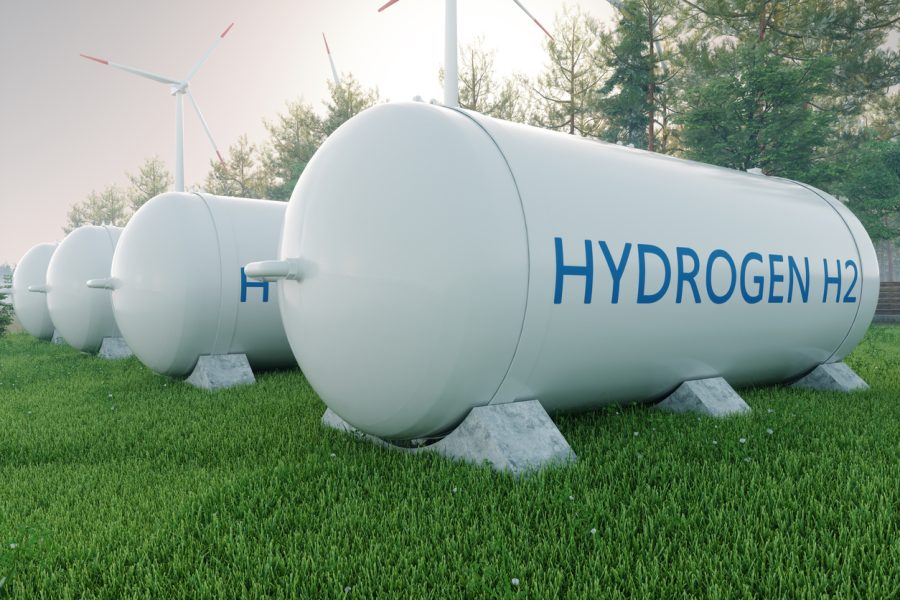
India can be energy-independent by 2047 through green tech: US report

A report by a top US research institute, while highlighting Prime Minister Narendra Modi’s Atmanirbhar Bharat (self-reliant India) push, has said that India can achieve energy independence through clean technology by 2047.
The report, titled Pathways to Atmanirbhar Bharat, has been jointly published by Lawrence Berkeley National Laboratory, a federally funded research and development centre in the US, and The India Energy and Climate Center (IECC) located at the UC Berkeley’s Goldman School of Public Policy. It highlights the steps taken by India towards the adoption of clean energy.
India, the world’s fifth largest economy, is 80–85 per cent dependent on imports to meet its oil and coal needs. The price and supply volatilities in global energy markets, as witnessed in recent years, strain India’s foreign exchange reserves, resulting in economy-wide inflation.
However, recent dramatic declines in clean energy costs offer India an opportunity to lower energy imports through investment in renewable energy, battery storage, electric vehicles (EVs), and green hydrogen, the report said.
Also read: India’s potential in green energy no less than a goldmine, invest here: PM
Modi’s target
PM Modi has set a target to install 500 GW (gigawatt) of renewable energy capacity by 2030. The government intends to push EV sales in India to capture 30% of the private car market, 70% of commercial vehicle market, and 80% of two- and three-wheeler market by 2030.
Also, it is targeting to produce 5 million tonnes of green hydrogen by splitting water using electricity from renewable sources. Abundant solar energy and local technology will back these targets and reduce carbon emissions. All these efforts will go towards building an Atmanirbhar Bharat or a self-reliant India that does have to depend on imports for meeting its energy needs.
Energy independence, the report said, involves investment in renewables, EVs, and green hydrogen. Generating electricity from solar and wind energy will help the economy move away from coal-based generation, while the use of electricity-charged batteries will cut dependence on liquid fuel like petrol and diesel. Zero-carbon hydrogen will decarbonise Indian industry, cutting emissions and lowering dependence on imported fuel.
“This would involve installing more than 500 GW of non-fossil electricity-generation capacity by 2030, an 80 per cent clean grid by 2040 and 90 per cent by 2047,” the report said. “Nearly 100 per cent of new vehicle sales could be electric by 2035. Heavy industrial production shifts primarily to green hydrogen and electrification: 90 per cent of iron and steel, 90 per cent of cement, and 100 per cent of fertilizers by 2047.”
And this could help “India achieve energy independence through clean technology by 2047,” the report said.
Also read: A slew of ‘green’ and ‘clean energy’ initiatives in Union Budget 2023
Advantages of energy independence
The transition to electric vehicles could save crude oil imports by over 90 per cent (or $240 billion) by 2047, while green hydrogen-based and electrified industrial production would reduce industrial coal imports by 95 per cent. Lithium needed for manufacturing new electric vehicles and grid-scale battery storage systems (around 2 million tonnes cumulative between 2023 and 2040) could be produced domestically using newly discovered reserves.
“Energy independence is economically advantageous,” it said. “Clean energy will reduce and inflation-proof India’s energy expenditure as renewables, EV batteries, and hydrogen infrastructure are capital assets with rapidly falling costs. A shift to electric transportation will create USD 2.5 trillion in net consumer savings by 2047.”
Indian industry, to remain globally competitive, must also transition to clean technologies like green steel manufacturing, as major export markets (e.g., EU) make carbon neutrality commitments, the report said, adding that the clean energy transition would have minimal impact on tax revenues.
Fossil fuel taxes, duties, and royalties contribute about 12% of state and central government revenue. Despite an aggressive clean energy transition, fossil fuel consumption and associated tax revenues will not drop below 2020 levels until the mid-2030s, it said.
Also read: Green energy is on surge, but can it fill the bottomless pit of demand?
Rapid expansion of infra needed
The study said a rapid expansion of clean energy infrastructure will be needed. “Because of transport, industrial electrification and green hydrogen production, electricity demand could increase nearly five-fold — from 1,300 TWh/year to over 6,600 TWh/year by 2050. This would require a massive scale-up of renewable energy deployment to 40 GW a year through 2030, ramping up to about 100 GW a year between 2030 and 2050.” (TWh or Terawatt-hour is a measure of electrical energy.)
Clean energy deployment will be more capital-intensive, needing a net additional investment of USD 1.5–2 trillion between 2023-2047, compared with business-as-usual.
“Achieving energy independence could offer environmental and public health benefits without compromising economic growth. With an aggressive clean energy transition, over 4 million air pollution-related premature deaths could be avoided between 2023-2047. India’s CO2 emissions will peak in the early 2030s, before dropping to 800 million tonnes per year by 2047 (85–90 per cent of the way to net-zero emissions).
“Managing the clean energy transition would require significant policy support. The policy ecosystem needs to have five pillars: deployment mandates for commercial / cost-effective clean technologies that provide the economies of scale, financial support for emerging technologies, long-term infrastructure planning, accelerating/scaling domestic manufacturing, and planning for a just transition,” it added.
(With agency inputs)


